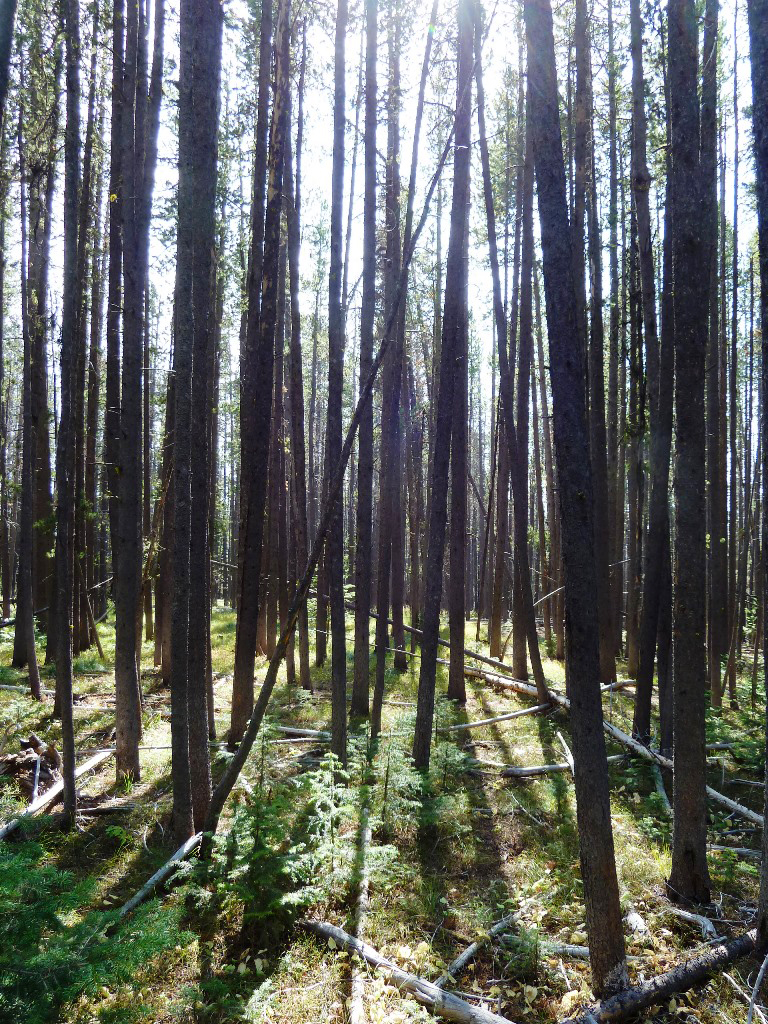Lodgepole Pine: Wildfires Create Signature Montana Forests
 Life gets busy for everyone. We all dream about getting away from it all for an hour, a day or perhaps even a week. My favorite is to go for a hike through one of Montana’s lodgepole pine-covered mountainsides and stretch out under the trees on a bed of pinegrass and dwarf huckleberry, also known as grouse whortleberry, and listening to the wind gently whisper its secrets through the tree crowns and needles.
Life gets busy for everyone. We all dream about getting away from it all for an hour, a day or perhaps even a week. My favorite is to go for a hike through one of Montana’s lodgepole pine-covered mountainsides and stretch out under the trees on a bed of pinegrass and dwarf huckleberry, also known as grouse whortleberry, and listening to the wind gently whisper its secrets through the tree crowns and needles.
The lodgepole pine forests that cover several million acres of Montana and Wyoming are born from wildfires that swept across the landscape, turning everything black in a maelstrom of fire and smoke during hot, dry stretches of late summer. This tree species has a unique cone that rests on branches high in the tree crown that looks a bit like a miniature mace, that grey knobby iron club carried by medieval knights. The cone is called “serotinous” because the individual scales that cover the seeds remain tightly closed, allowing for no gap in the small pineapple-like structure. Only when subjected to the 10 minutes of 800 ˚F heat of a fast-moving, raging wildfire do the scales curl open, dropping their seeds on the freshly formed ash layer amidst the remaining black toothpick forest. Where all other trees and their seed perish, lodgepole pine seeds survive and recolonize the burned landscape – often gaining the advantage over less-fire-tolerant species and germinating several thousand seedlings per acre.
The resulting forest grows back thick – sometimes referred to as “doghair” – as one might feel like a flea on a dog’s back when trying to navigate through a younger stand. Eventually, competition with each other causes those with poor root systems or slower growth to get crowded out and die, and the forest transitions from several thousand little trees per acre to a few hundred. Their density suppresses undergrowth with the exception of the silky looking pinegrass and carpet of grouse whortleberry with a few other forbs and mushrooms thrown in. The result is a relatively uniform forest with all trees the same height, their sparse crowns allowing for streams of sunlight and catching the wind with a telltale whisper.
It is a zen-like atmosphere, punctuated with the occasional chattering squirrel, squawk of a Clark’s nutcracker or, if you are lucky, the flutelike and haunting distant call of a bull elk in the fall rut. Yet the scene is quiet and whispering, allowing people to collect their thoughts and explore them while breathing in the crisp, cool air of a mountain morning.
It is important to remember that such tranquility is only a partial phase of the mountain forest ecosystem. These forests are born of fire, avalanches, logging and other cataclysmic disturbances. The loggers I speak of are not the highly skilled professionals – they are a tiny insect the size of a barley kernel called a bark beetle, Dendroctunus ponderosae, or more commonly known as the mountain pine beetle. It bores holes into the tree bark of lodgepole pines when the trees are mature – starting around 60 to 70 years of age when the stems are six or more inches in diameter. Each beetle pair produces about 80 offspring in one season, allowing one pair to produce more than half a million hungry offspring in a matter of three years. That uniform forest of dense even-aged trees is the perfect population to spawn an epidemic, producing dead trees that in turn promote another raging wildfire. Alternatively, this same process can occur under the care of human loggers – clearcuts where the stemwood is converted into houses and the logging debris burned in prescribed fires creates a close to identical effect.
Autumn is the perfect season with sunny days and crisp clear nights to go and experience this hallmark tree and forest of the northern Rockies. Take a sleeping bag and unroll it under the stars for an overnight experience. But visit a live green forest, as falling trees can be very hazardous in a beetle-killed forest.
UM College of Forestry and Conservation | Associate Professor of Forestry, Ecology and Management | MSU Extension Forestry Specialist |Peter Kolb
